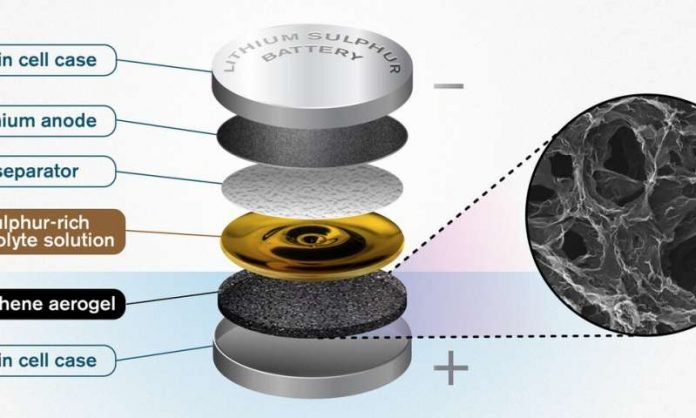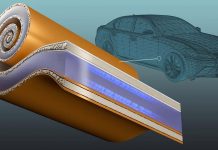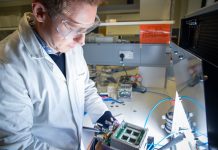
In a new study, scientists have developed a new way to improve the performance of lithium sulphur batteries.
The research was conducted by Researchers at Chalmers University of Technology, Sweden.
Previous research has shown that lithium sulphur batteries can offer a theoretical energy density more than five times that of lithium-ion batteries.
The current study unveils a promising breakthrough for this type of battery.
In the study, the team designed a porous, sponge-like aerogel that acts as a free-standing electrode in the battery cell.
The design allows for better and higher utilization of sulphur. The new design was based on a previous finding of the team.
In a battery, there are two supporting electrodes coated with an active substance known as an anode and a cathode.
An electrolyte is in between and allows ions to be transferred back and forth.
There is also a separator that acts as a physical barrier. It can prevent contact between the two electrodes whilst still allowing the transfer of ions.
Previously, the team had combined the cathode and electrolyte into one liquid, a so-called ‘catholyte.’
It could save weight in the battery and offer faster charging and better power capabilities.
In the current study, the team found that with the development of the graphene aerogel, the concept has offered some very promising results.
The team suggests that the new design avoids the two main problems of lithium sulphur batteries.
One is that the sulphur dissolves into the electrolyte and is lost. The second is that sulphur molecules migrate from the cathode to the anode.
Future work needs to develop manufacturing processes to make them commercially viable.
The lead author of the study is Carmen Cavallo of the Department of Physics at Chalmers.
The study is published in the Journal of Power Sources.
Copyright © 2019 Knowridge Science Report. All rights reserved.



